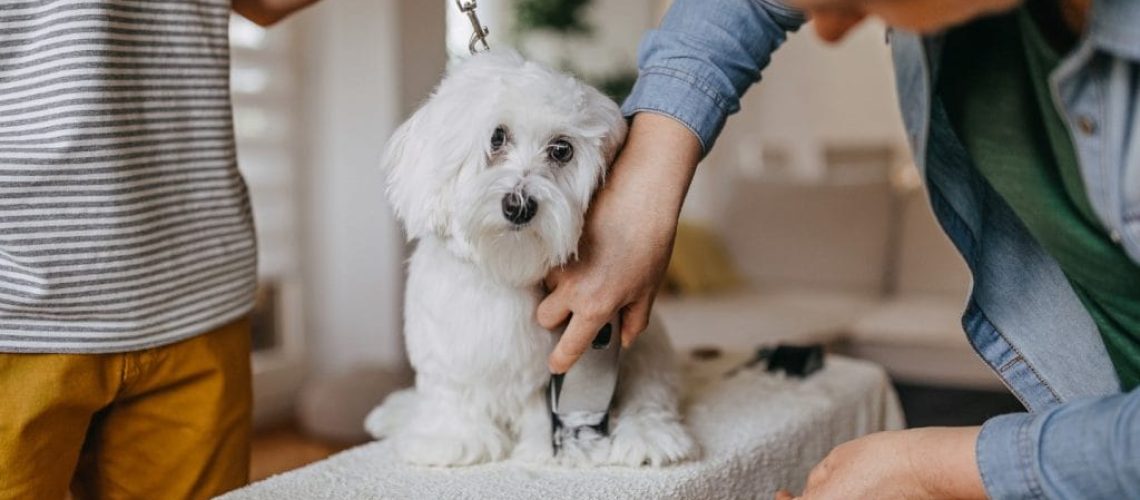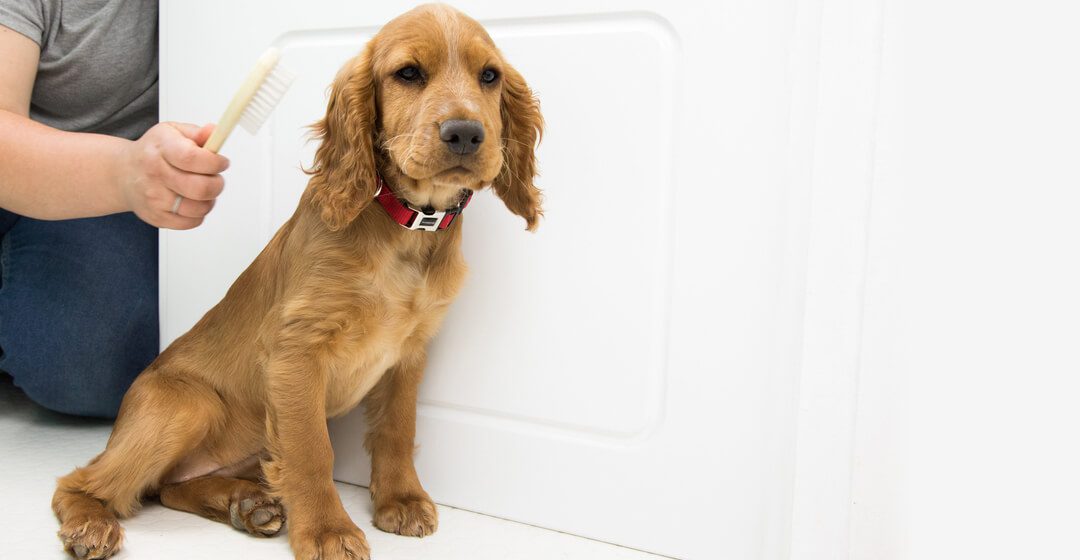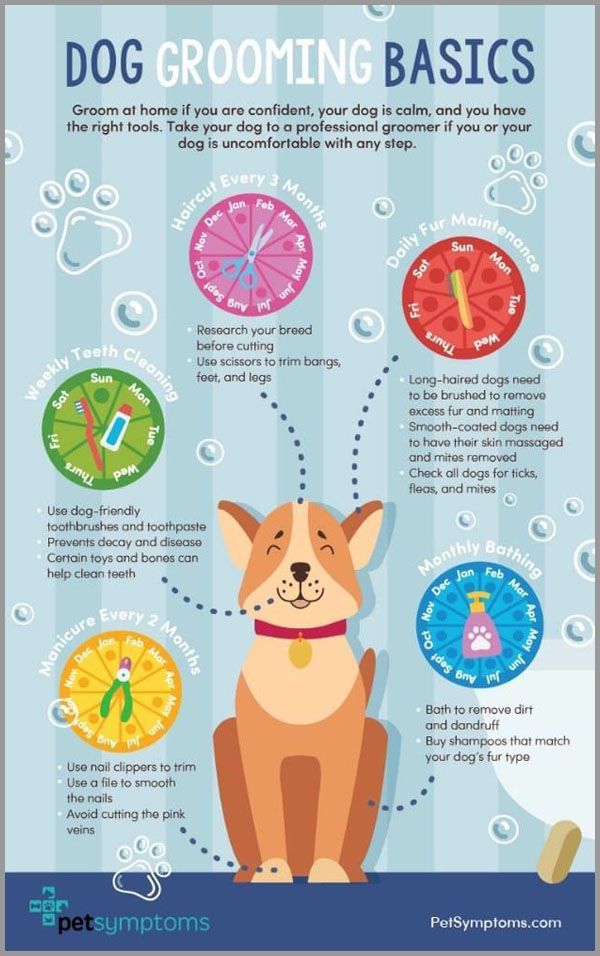Giving your dog a haircut at home can be a convenient and cost-effective way to keep them looking their best. With a few simple steps and the right tools, you can easily groom your furry friend without having to visit a professional groomer.
Key Takeaways:
-
1. Proper preparation is essential before giving your dog a haircut at home, including gathering the necessary tools and ensuring a calm environment.
2. It is important to choose the right type of haircut for your dog's breed and coat type, as different breeds require specific grooming techniques.
3. Take your time and be patient when trimming your dog's hair, as rushing can lead to accidents or an uneven cut.
4. Regularly clean and maintain your grooming tools to ensure they are sharp and in good condition, as dull blades can cause discomfort or injury to your dog.
5. If you are unsure or uncomfortable with giving your dog a haircut at home, it is always best to seek professional help from a groomer to avoid any potential harm or mistakes.
Why is it important to give your dog a haircut?
Giving your dog a regular haircut is essential for their overall health and well-being. Just like humans, dogs can get uncomfortable when their hair grows too long and starts to tangle or mat. These mats can be painful for your furry friend and can even lead to skin infections if left untreated. By giving your dog a haircut, you are preventing these issues and keeping them comfortable.
Haircuts also help to keep your dog's coat clean and free from dirt, debris, and parasites. Long hair can easily trap these unwanted guests, leading to discomfort and potential health problems. Regular grooming sessions, including haircuts, allow you to inspect your dog's skin for any abnormalities or signs of illness.
Another reason why giving your dog a haircut is important is that it helps them stay cool during hot weather. Dogs with thick or long coats can easily overheat in the summer months, leading to heatstroke or other heat-related illnesses. Trimming their hair helps to regulate their body temperature and keeps them comfortable in warmer climates.
Essential tools needed for giving your dog a haircut at home
Before you start giving your dog a haircut at home, make sure you have all the necessary tools on hand:
Grooming clippers:
- A good quality pair of grooming clippers specifically designed for dogs is essential. These clippers should have adjustable blades so that you can achieve different lengths of haircuts.
Grooming scissors:
- In addition to clippers, having a pair of grooming scissors is important for trimming hard-to-reach areas or for adding finishing touches to the haircut.
Slicker brush:
- A slicker brush is helpful for removing tangles and mats before you start the haircut. It can also be used to brush out any loose hair after the haircut is complete.
Comb:
- A fine-toothed comb is useful for smoothing out the coat and ensuring an even cut.
Grooming table or non-slip mat:
- A grooming table or a non-slip mat provides a stable surface for your dog during the haircut. It helps to keep them calm and in one place.
Having these essential tools will make the haircutting process easier and more efficient, ensuring that your dog's coat looks its best.
Preparing your dog before starting the haircutting process
Before you begin giving your dog a haircut, it's important to prepare them properly to ensure a successful grooming session:
Bathing:
Start by giving your dog a bath to clean their coat and remove any dirt or debris. Use a dog-specific shampoo that suits their skin type. Make sure to rinse thoroughly to avoid any residue left on their fur.
Drying:
Once your dog is clean, dry them thoroughly using towels or a blow dryer set on low heat. Make sure not to use high heat as it can be uncomfortable for your furry friend.
Brushing:
After drying, brush your dog's coat using a slicker brush or comb to remove any tangles or mats. This step is crucial before starting the haircut as it helps prevent hair clumps in the clippers and ensures an even cut.
Calm environment:
Create a calm and quiet environment for your dog's haircut. Find a well-lit area with minimal distractions to help them stay relaxed during the grooming process.
By following these preparation steps, you are setting your dog up for a successful and stress-free haircutting experience.
Safety tips for giving your dog a haircut
Giving your dog a haircut at home can be a rewarding experience, but it's important to prioritize safety. Here are some essential safety tips to keep in mind:
Use blunt-tipped scissors:
When using scissors near your dog's face or sensitive areas, make sure they have blunt-tipped ends. This helps prevent accidental cuts or injuries.
Take breaks if needed:
If your dog becomes anxious or restless during the grooming session, take short breaks to allow them to calm down. Forcing them to continue when stressed can lead to accidents or injuries.
Be cautious around sensitive areas:
When trimming around sensitive areas such as the ears, paws, or tail, use extra caution. These areas are more prone to injuries, so take your time and work slowly.
Keep clippers away from skin folds:
Avoid running clippers directly over skin folds as it can easily catch and cause discomfort or injury. Use your fingers as a guide to protect the skin while trimming.
Watch out for signs of distress:
Pay attention to your dog's body language and vocalizations during the grooming process. If they show signs of distress such as growling, whimpering, or trying to escape, stop immediately and reassess their comfort level.
Prioritizing safety ensures that both you and your furry friend have a positive grooming experience without any accidents or injuries.
Choosing the right length and style for your dog's haircut
When it comes to choosing the length and style for your dog's haircut, there are a few factors to consider:
Breed characteristics:
Take into account your dog's breed characteristics. Some breeds have specific grooming requirements or traditional styles that should be maintained. Researching breed-specific haircuts can help you make an informed decision.
Lifestyle and activity level:
Consider your dog's lifestyle and activity level. If they are highly active or spend a lot of time outdoors, a shorter haircut may be more practical to prevent matting and keep them cool.
Grooming maintenance:
Think about how much time and effort you are willing to put into grooming maintenance. Longer haircuts often require more frequent brushing and professional grooming sessions to maintain their appearance.
Your preferences:
Lastly, consider your own preferences. Choose a haircut that you find visually appealing and suits your dog's personality.
If you're unsure about the best style for your dog, consult with a professional groomer who can provide guidance based on their expertise and knowledge of different breeds.
Step-by-step guide to trimming your dog's hair around their face and ears
Trimming your dog's hair around their face and ears requires precision and care. Follow these step-by-step instructions for a successful trim:
Gather the necessary tools:
- Clippers with an appropriate blade size for the desired length
- Grooming scissors with blunt-tipped ends
- Fine-toothed comb
- Treats as rewards for positive behavior
Secure your dog:
Ensure that your dog is in a comfortable and secure position. Use treats or ask someone to assist you in holding them gently if needed.
Start with the clippers:
Using the clippers, begin by trimming the hair on top of your dog's head, moving from the forehead towards the ears. Take slow and steady strokes, following the natural direction of hair growth.
Trim around the ears:
Carefully trim around your dog's ears using grooming scissors. Be cautious not to cut too close to the skin or accidentally nick their ear. Trim any excess hair that may obstruct their ability to hear or cause irritation.
Shape the face:
To shape your dog's face, use grooming scissors to trim any long hair around their eyes, cheeks, and muzzle. Work slowly and carefully, ensuring that you maintain a balanced look.
Blend and comb:
Use a fine-toothed comb to blend any uneven areas and ensure a smooth transition between trimmed and untrimmed sections. Comb through the hair gently to remove any loose hairs.
Reward and praise:
Praise your dog throughout the trimming process and offer treats as rewards for good behavior. This positive reinforcement helps create a pleasant experience for both of you.
If you're unsure about any step or feel uncomfortable trimming certain areas, it's best to consult with a professional groomer for guidance or assistance.
Precautions when trimming your dog's nails during a haircut
Trimming your dog's nails is an important part of their grooming routine but requires caution to avoid causing pain or injury. Here are some precautions to take when trimming your dog's nails during a haircut:
Use proper nail clippers:
Invest in high-quality nail clippers designed specifically for dogs. Avoid using human nail clippers as they may cause discomfort or splinter the nails.
Trim gradually:
Trim small amounts of the nail at a time, rather than attempting to cut off a large portion. This reduces the risk of cutting into the quick, which can be painful and cause bleeding.
Watch for the quick:
The quick is a pink area within the nail that contains blood vessels and nerves. Be cautious not to cut into it, as it can cause pain and bleeding. Trim only the curved part of the nail without reaching the quick.
Keep styptic powder on hand:
In case you accidentally trim too close to the quick and cause bleeding, have styptic powder or cornstarch available to stop any bleeding quickly. Apply a small amount to the affected area using gentle pressure.
Sedation if necessary:
If your dog becomes extremely anxious or uncooperative during nail trimming, it may be best to seek professional help or consult with your veterinarian. They can provide sedation options or guidance on handling difficult situations.
Remember, if you're uncomfortable or unsure about trimming your dog's nails yourself, it's always better to seek assistance from a professional groomer or veterinarian who has experience in this area.
Dealing with difficulties or challenges while giving your dog a haircut at home
Giving your dog a haircut at home can sometimes come with challenges. Here are some common difficulties you may encounter and how to deal with them:
Anxious behavior:
If your dog becomes anxious or stressed during the grooming session, take breaks and offer reassurance. Speak in a calm and soothing voice to help them relax. Consider using calming aids such as lavender-infused sprays or anxiety wraps.
Matted hair:
If you encounter matted hair that is difficult to comb through, avoid pulling or tugging on it forcefully. Instead, use a detangling spray or conditioner to make the hair more manageable. Gently work through the mat with your fingers or a slicker brush.
Difficult-to-reach areas:
Some areas, such as under the belly or around sensitive spots, can be challenging to reach and trim. Take your time and work slowly using small scissors or clippers with a shorter blade for precision. If needed, ask for assistance from someone who can hold your dog in a comfortable position.
Injury prevention:
To prevent accidental injuries, always prioritize safety and use caution when handling sharp tools near your dog's skin. If you're unsure about a particular technique or are struggling with a specific area, consult with a professional groomer for guidance.
Professional help:
If you find that giving your dog a haircut at home is too difficult or stressful for both of you, it's perfectly fine to seek professional help. Professional groomers have the expertise and experience to handle challenging situations and ensure your dog's comfort and safety.
Caring for your dog after completing the haircut
After completing your dog's haircut, there are some important post-grooming care steps to follow:
Clean their ears:
Check your dog's ears for any excess hair or debris that may have accumulated during the grooming process. Use ear cleaning solution and cotton balls to gently clean the outer ear. Avoid inserting anything deep into the ear canal.
Inspect their skin:
Take a moment to inspect your dog's skin for any redness, irritation, or signs of discomfort. If you notice anything unusual, consult with your veterinarian for further evaluation and treatment if necessary.
Reward and praise:
Offer treats and praise to reward your dog for their cooperation during the grooming session. This positive reinforcement helps create a positive association with the haircutting experience.
Clean up the grooming area:
Dispose of any trimmed hair or debris from the grooming area. Clean your tools thoroughly to ensure they are ready for future use.
Maintain regular grooming routine:
To keep your dog's coat in good condition, establish a regular grooming routine that includes brushing, bathing, and occasional haircuts as needed. Regular maintenance helps prevent matting, keeps their coat healthy, and maintains their overall well-being.
By following these post-grooming care steps, you are ensuring that your dog remains comfortable and happy after their haircut.
| Conclusion | |
| Remember: | Giving your dog a haircut at home can be a cost-effective and convenient option. However, it requires proper tools, techniques, and patience to ensure your dog's safety and comfort. |
| Key Points: |
|

















